Cover Page
Title Page
Copyright Page
Dedication
Preface
Table of Contents
Chapter 1 Introduction to Statistics
1.1 Introduction
1.2 Data Collection and Descriptive Statistics
1.3 Inferential Statistics and Probability Models
1.4 Populations and Samples
1.5 A Brief History of Statistics
Problems
Chapter 2 Descriptive Statistics
2.1 Introduction
2.2 Describing Data Sets
2.2.1 Frequency Tables and Graphs
2.2.2 Relative Frequency Tables and Graphs
2.2.3 Grouped Data, Histograms, Ogives, and Stem and Leaf Plots
2.3 Summarizing Data Sets
2.3.1 Sample Mean, Sample Median, and Sample Mode
2.3.2 Sample Variance and Sample Standard Deviation
2.3.3 Sample Percentiles and Box Plots
2.4 Chebyshev’s Inequality
2.5 Normal Data Sets
2.6 Paired Data Sets and the Sample Correlation Coefficient
Problems
Chapter 3 Elements of Probability
3.1 Introduction
3.2 Sample Space and Events
3.3 Venn Diagrams and the Algebra of Events
3.4 Axioms of Probability
3.5 Sample Spaces Having Equally Likely Outcomes
3.6 Conditional Probability
3.7 Bayes’ Formula
3.8 Independent Events
Problems
Chapter 4 Random Variables and Expectation
4.1 Random Variables
4.2 Types of Random Variables
4.3 Jointly Distributed Random Variables
4.3.1 Independent Random Variables
*4.3.2 Conditional Distributions
4.4 Expectation
4.5 Properties of the Expected Value
4.5.1 Expected Value of Sums of Random Variables
4.6 Variance
4.7 Covariance and Variance of Sums of Random Variables
4.8 Moment Generating Functions
4.9 Chebyshev’s Inequality and the Weak Law of Large Numbers
Problems
Chapter 5 Special Random Variables
5.1 The Bernoulli and Binomial Random Variables
5.1.1 Computing the Binomial Distribution Function
5.2 The Poisson Random Variable
5.2.1 Computing the Poisson Distribution Function
5.3 The Hypergeometric Random Variable
5.4 The Uniform Random Variable
5.5 Normal Random Variables
5.6 Exponential Random Variables
*5.6.1 The Poisson Process
*5.7 The Gamma Distribution
5.8 Distributions Arising from the Normal
5.8.1 The Chi-Square Distribution
5.8.2 The t-Distribution
5.8.3 The F-Distribution
*5.9 The Logistics Distribution
Problems
Chapter 6 Distributions of Sampling Statistics
6.1 Introduction
6.2 The Sample Mean
6.3 The Central Limit Theorem
6.3.1 Approximate Distribution of the Sample Mean
6.3.2 How Large a Sample Is Needed?
6.4 The Sample Variance
6.5 Sampling Distributions from a Normal Population
6.5.1 Distribution of the Sample Mean
6.5.2 Joint Distribution of X and S2
6.6 Sampling from a Finite Population
Problems
Chapter 7 Parameter Estimation
7.1 Introduction
7.2 Maximum Likelihood Estimators
*7.2.1 Estimating Life Distributions
7.3 Interval Estimates
7.3.1 Confidence Interval for a Normal Mean When the Variance Is Unknown
7.3.2 Confidence Intervals for the Variance of a Normal Distribution
7.4 Estimating the Difference in Means of Two Normal Populations
7.5 Approximate Confidence Interval for the Mean of a Bernoulli Random Variable
*7.6 Confidence Interval of the Mean of the Exponential Distribution
*7.7 Evaluating a Point Estimator
*7.8 The Bayes Estimator
Problems
Chapter 8 Hypothesis Testing
8.1 Introduction
8.2 Significance Levels
8.3 Tests Concerning the Mean of a Normal Population
8.3.1 Case of Known Variance
8.3.2 Case of Unknown Variance: The t-Test
8.4 Testing the Equality of Means of Two Normal Populations
8.4.1 Case of Known Variances
8.4.2 Case of Unknown Variances
8.4.3 Case of Unknown and Unequal Variances
8.4.4 The Paired t-Test
8.5 Hypothesis Tests Concerning the Variance of a Normal Population
8.5.1 Testing for the Equality of Variances of Two Normal Populations
8.6 Hypothesis Tests in Bernoulli Populations
8.6.1 Testing the Equality of Parameters in Two Bernoulli Populations
8.7 Tests Concerning the Mean of a Poisson Distribution
8.7.1 Testing the Relationship Between Two Poisson Parameters
Problems
Chapter 9 Regression
9.1 Introduction
9.2 Least Squares Estimators of the Regression Parameters
9.3 Distribution of the Estimators
9.4 Statistical Inferences about the Regression Parameters
9.4.1 Inferences Concerning β
9.4.2 Inferences Concerning α
9.4.3 Inferences Concerning the Mean Response α+βx0
9.4.4 Prediction Interval of a Future Response
9.4.5 Summary of Distributional Results
9.5 The Coefficient of Determination and the Sample Correlation Coefficient
9.6 Analysis of Residuals: Assessing the Model
9.7 Transforming to Linearity
9.8 Weighted Least Squares
9.9 Polynomial Regression
*9.10 Multiple Linear Regression
9.10.1 Predicting Future Responses
9.11 Logistic Regression Models for Binary Output Data
Problems
Chapter 10 Analysis of Variance
10.1 Introduction
10.2 An Overview
10.3 One-Way Analysis of Variance
10.3.1 Multiple Comparisons of Sample Means
10.3.2 One-Way Analysis of Variance with Unequal Sample Sizes
10.4 Two-Factor Analysis of Variance:Introduction and Parameter Estimation
10.5 Two-Factor Analysis of Variance:Testing Hypotheses
10.6 Two-Way Analysis of Variance with Interaction
Problems
Chapter 11 Goodness of Fit Tests and Categorical Data Analysis
11.1 Introduction
11.2 Goodness of Fit Tests When All Parameters are Specified
11.2.1 Determining the Critical Region by Simulation
11.3 Goodness of Fit Tests When Some Parameters are Unspecified
11.4 Tests of Independence in Contingency Tables
11.5 Tests of Independence in Contingency Tables Having Fixed Marginal Totals
*11.6 The Kolmogorov–Smirnov Goodness of Fit Test for Continuous Data
Problems
Chapter 12 Nonparametric Hypothesis Tests
12.1 Introduction
12.2 The Sign Test
12.3 The Signed Rank Test
12.4 The Two-Sample Problem
*12.4.1 The Classical Approximation and Simulation
12.5 The Runs Test for Randomness
Problems
Chapter 13 Quality Control
13.1 Introduction
13.2 Control Charts for Average Values:The X-Control Chart
13.2.1 Case of Unknown μ and σ
13.3 S-Control Charts
13.4 Control Charts for the Fraction Defective
13.5 Control Charts for Number of Defects
13.6 Other Control Charts for Detecting Changes in the Population Mean
13.6.1 Moving-Average Control Charts
13.6.2 Exponentially Weighted Moving-Average Control Charts
13.6.3 Cumulative Sum Control Charts
Problems
Chapter 14* Life Testing
14.1 Introduction
14.2 Hazard Rate Functions
14.3 The Exponential Distribution in Life Testing
14.3.1 Simultaneous Testing — Stopping at the rth Failure
14.3.2 Sequential Testing
14.3.3 Simultaneous Testing — Stopping by a Fixed Time
14.3.4 The Bayesian Approach
14.4 A Two-Sample Problem
14.5 The Weibull Distribution in Life Testing
14.5.1 Parameter Estimation by Least Squares
Problems
Chapter 15 Simulation, Bootstrap Statistical Methods, and Permutation Tests
15.1 Introduction
15.2 Random Numbers
15.2.1 The Monte Carlo Simulation Approach
15.3 The Bootstrap Method
15.4 Permutation Tests
15.4.1 Normal Approximations in Permutation Tests
15.4.2 Two-Sample Permutation Tests
15.5 Generating Discrete Random Variables
15.6 Generating Continuous Random Variables
15.6.1 Generating a Normal Random Variable
15.7 Determining the Number of Simulation Runs in a Monte Carlo Study
Problems
Appendix of Tables
Index
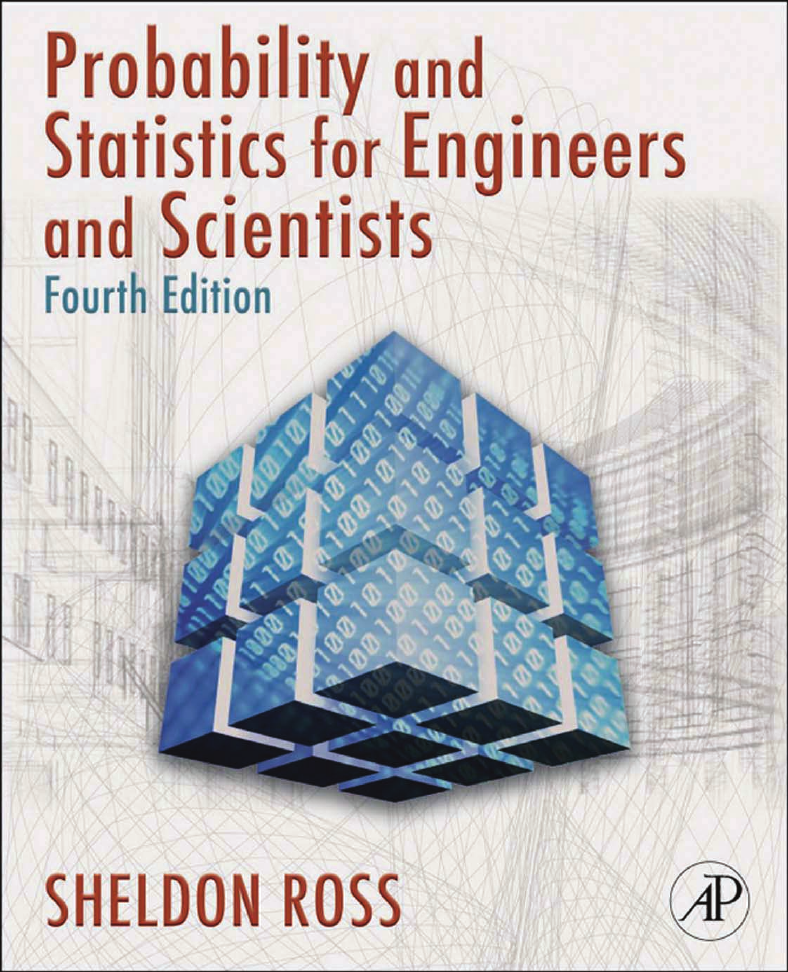
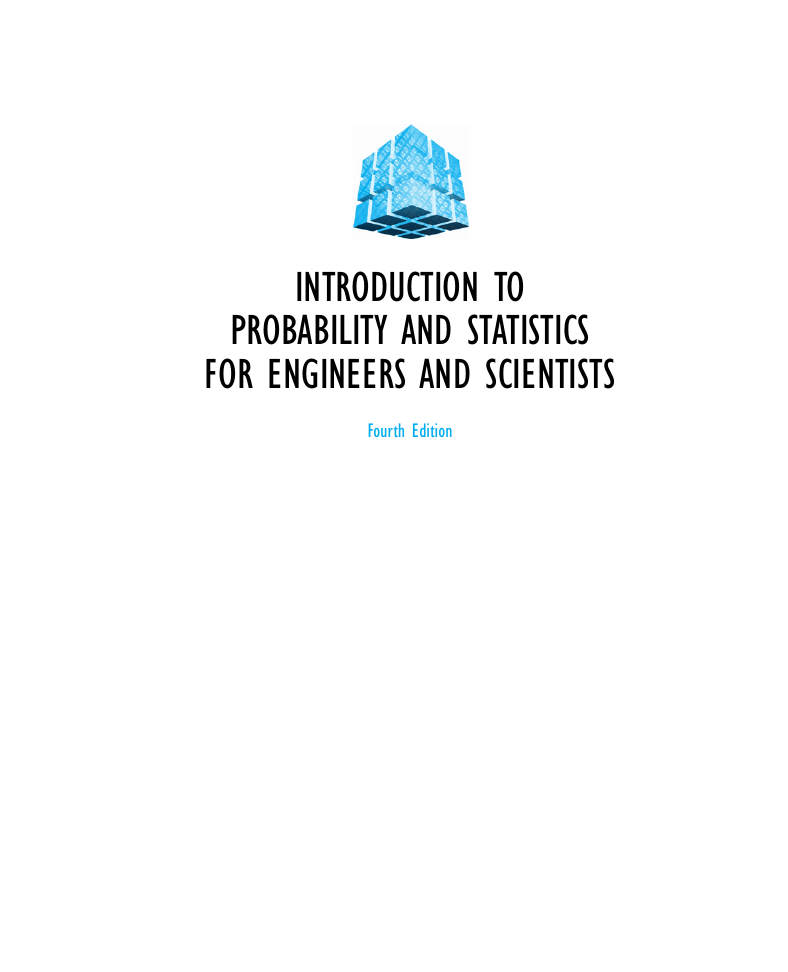
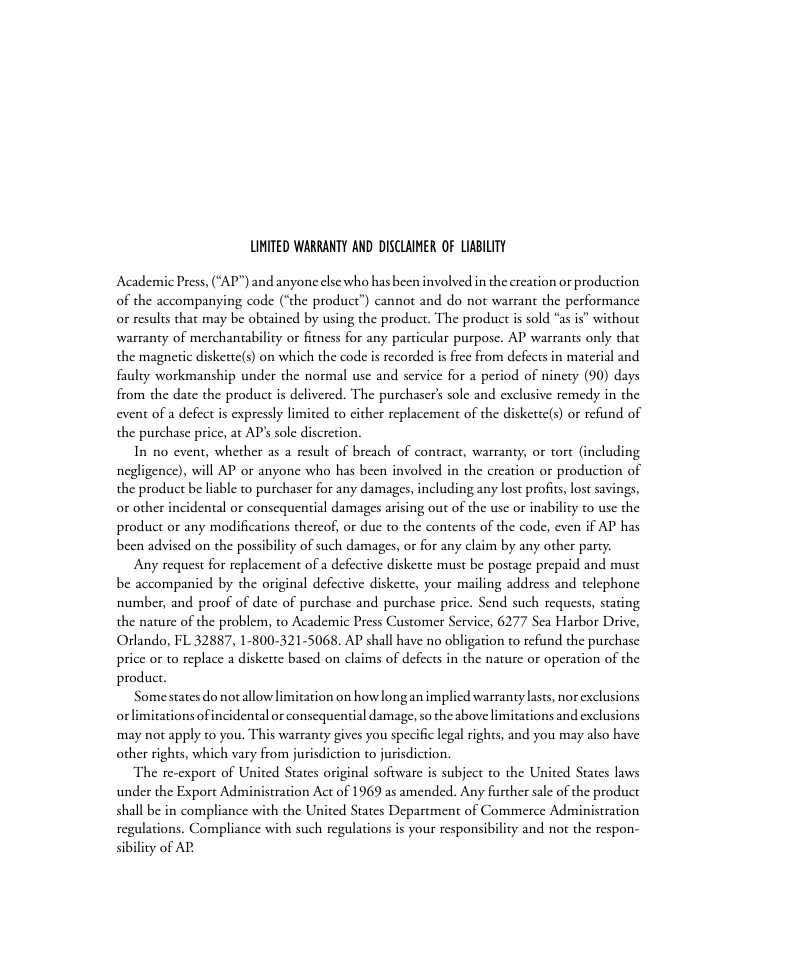
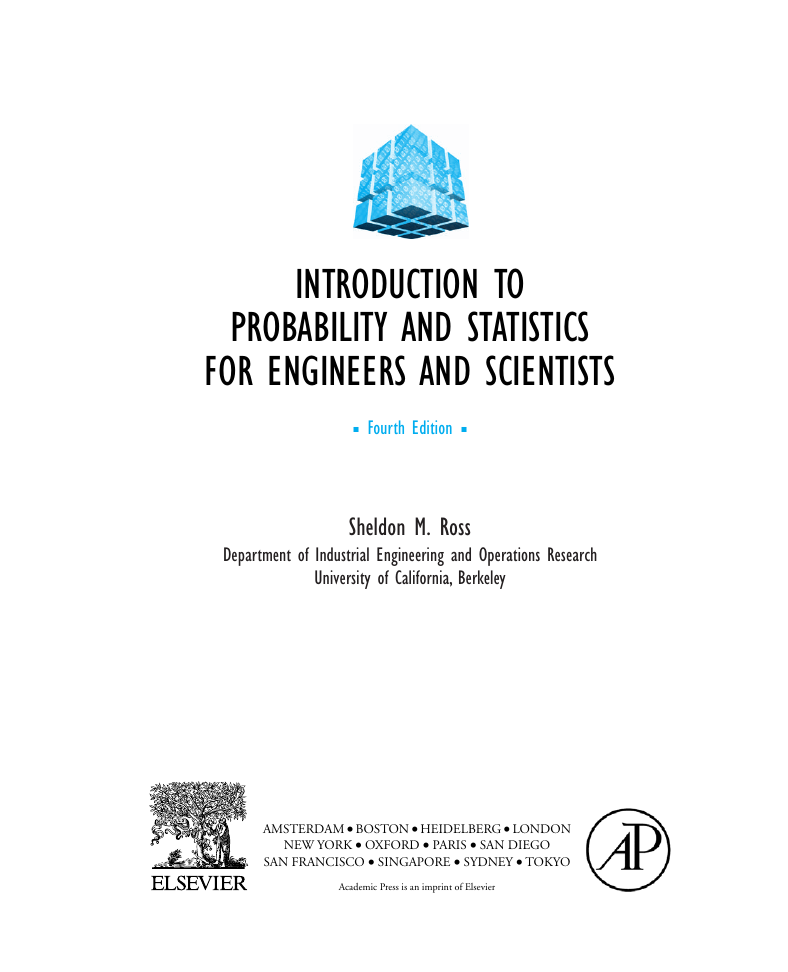
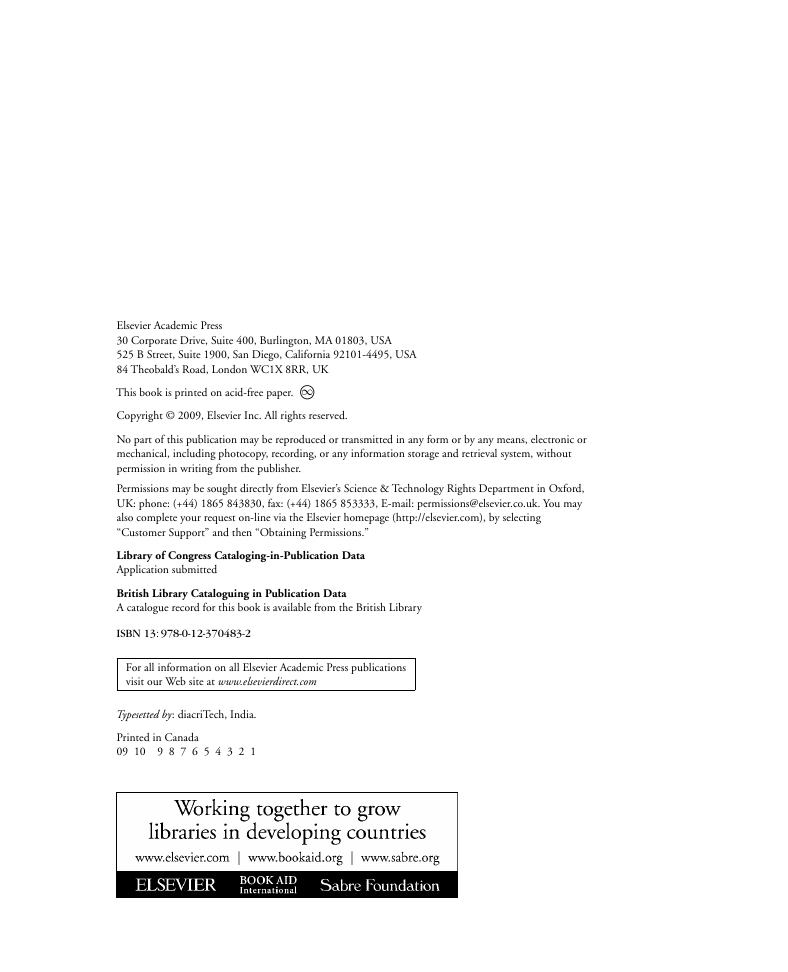


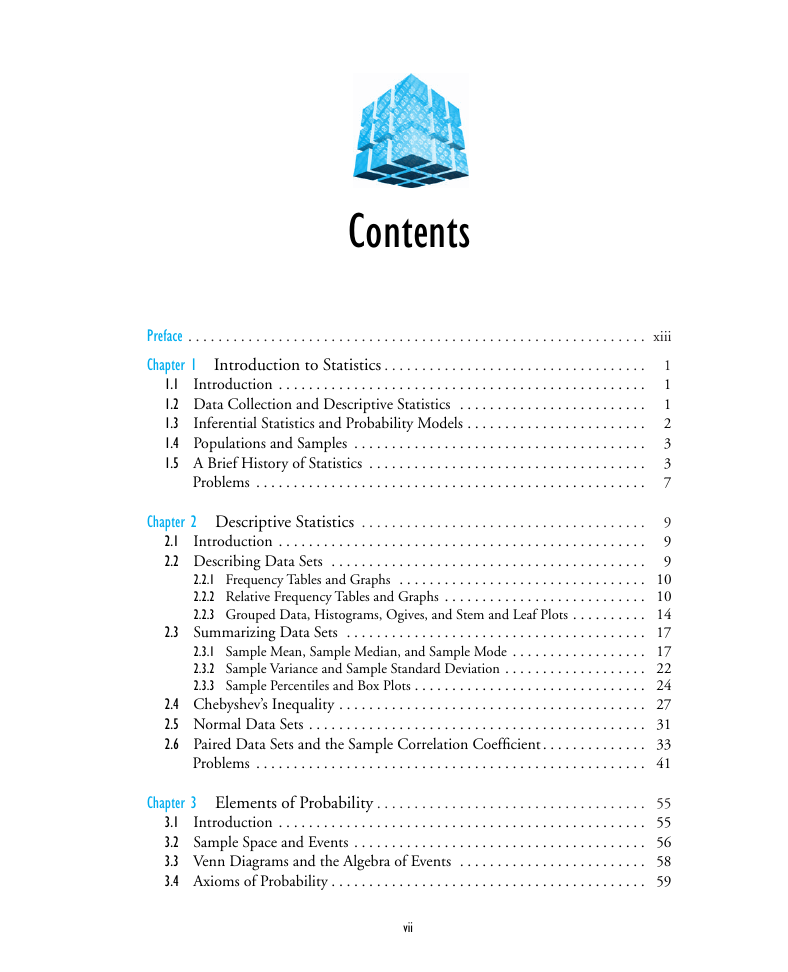








 2023年江西萍乡中考道德与法治真题及答案.doc
2023年江西萍乡中考道德与法治真题及答案.doc 2012年重庆南川中考生物真题及答案.doc
2012年重庆南川中考生物真题及答案.doc 2013年江西师范大学地理学综合及文艺理论基础考研真题.doc
2013年江西师范大学地理学综合及文艺理论基础考研真题.doc 2020年四川甘孜小升初语文真题及答案I卷.doc
2020年四川甘孜小升初语文真题及答案I卷.doc 2020年注册岩土工程师专业基础考试真题及答案.doc
2020年注册岩土工程师专业基础考试真题及答案.doc 2023-2024学年福建省厦门市九年级上学期数学月考试题及答案.doc
2023-2024学年福建省厦门市九年级上学期数学月考试题及答案.doc 2021-2022学年辽宁省沈阳市大东区九年级上学期语文期末试题及答案.doc
2021-2022学年辽宁省沈阳市大东区九年级上学期语文期末试题及答案.doc 2022-2023学年北京东城区初三第一学期物理期末试卷及答案.doc
2022-2023学年北京东城区初三第一学期物理期末试卷及答案.doc 2018上半年江西教师资格初中地理学科知识与教学能力真题及答案.doc
2018上半年江西教师资格初中地理学科知识与教学能力真题及答案.doc 2012年河北国家公务员申论考试真题及答案-省级.doc
2012年河北国家公务员申论考试真题及答案-省级.doc 2020-2021学年江苏省扬州市江都区邵樊片九年级上学期数学第一次质量检测试题及答案.doc
2020-2021学年江苏省扬州市江都区邵樊片九年级上学期数学第一次质量检测试题及答案.doc 2022下半年黑龙江教师资格证中学综合素质真题及答案.doc
2022下半年黑龙江教师资格证中学综合素质真题及答案.doc